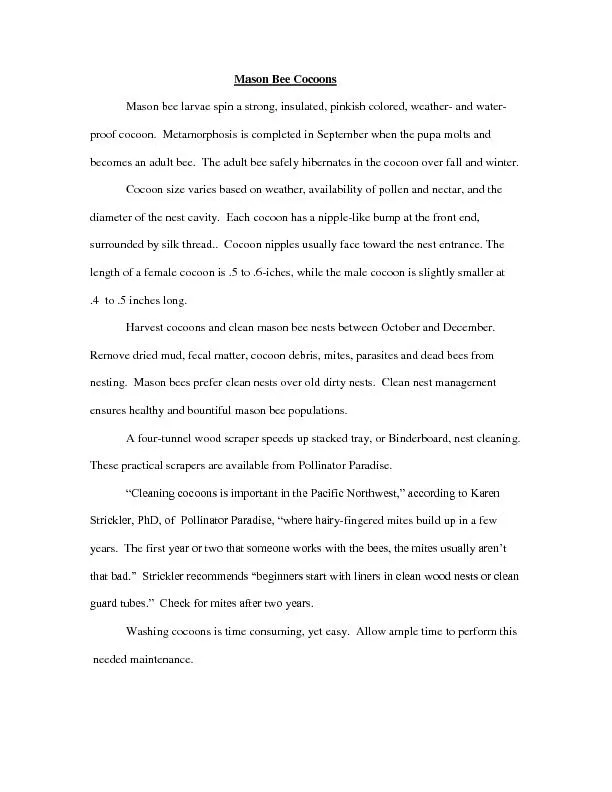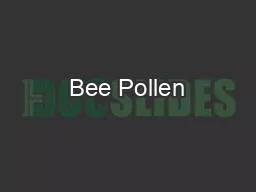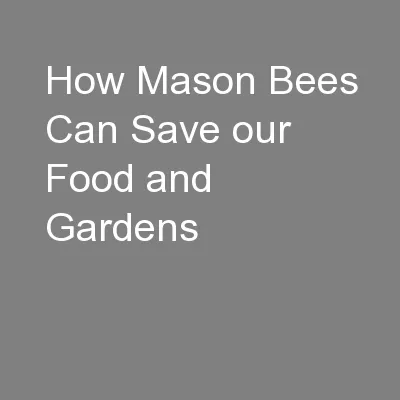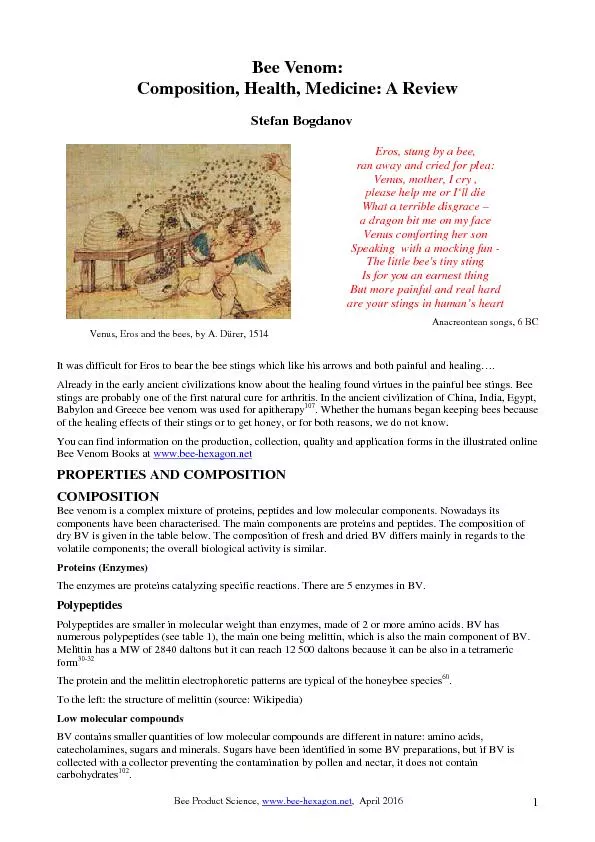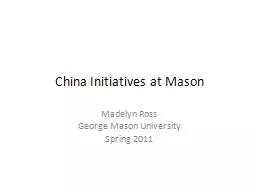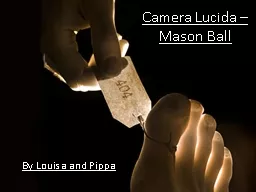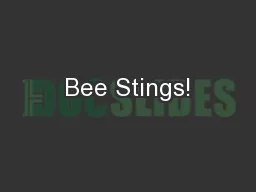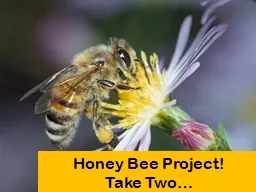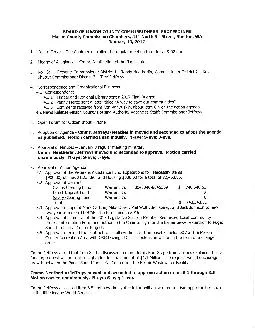PDF-Mason Bee Cocoons
Author : natalia-silvester | Published Date : 2016-05-21
Maso n bee larvae spin a strong ins ulated pinkish colored weather and water p roof cocoon Metamorph os is is completed in September when the pupa molts and becomes
Presentation Embed Code
Download Presentation
Download Presentation The PPT/PDF document "Mason Bee Cocoons" is the property of its rightful owner. Permission is granted to download and print the materials on this website for personal, non-commercial use only, and to display it on your personal computer provided you do not modify the materials and that you retain all copyright notices contained in the materials. By downloading content from our website, you accept the terms of this agreement.
Mason Bee Cocoons: Transcript
Download Rules Of Document
"Mason Bee Cocoons"The content belongs to its owner. You may download and print it for personal use, without modification, and keep all copyright notices. By downloading, you agree to these terms.
Related Documents

